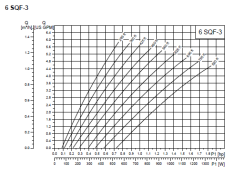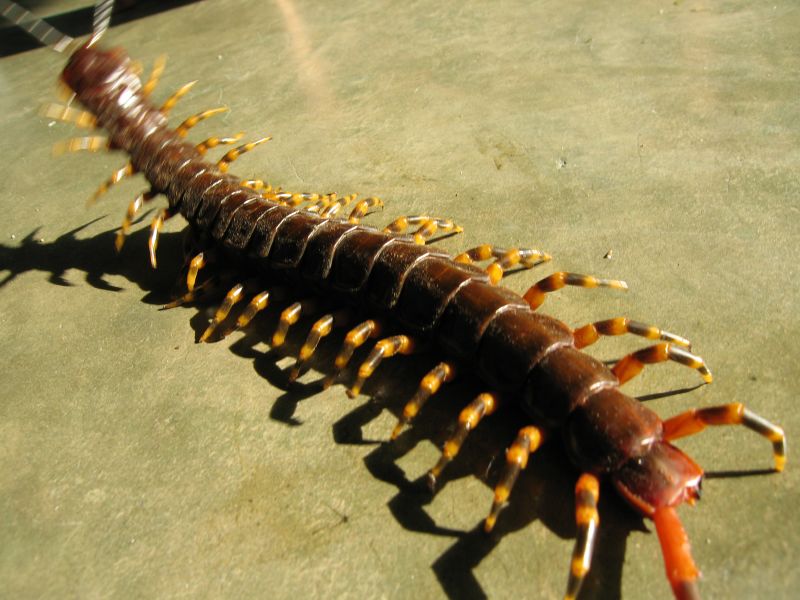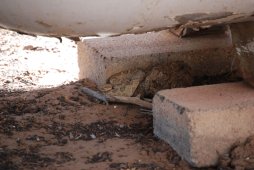$209 solar generator
The pump: I think it is a 6SQF3-M, which is supposed to run on AC or DC, down to 30VDC, or 90VAC, 1400W.
Grundfos Specs 6SQF3
The pump is 500ft down, with the water surface about 200ft below ground level.
Currently wired with about 800 ft of solid copper wire, probably 12 gauge (I can check if it matters a lot) between the pressure switch and 30gal pressure tank, at 240V. No storage tank.
I’m looking for some absolute CHEAPEST ways to get that pump to run, just to get some drinking/bathing water, when the power goes out, which it does, a lot in these parts.
Thoughts I’ve had:
1. Get some cheap Amazon “100W” solar panels, and rig something to swap the pump off the 240AC, to whatever DC the panels put out. I saw a review that said 6 of the 100W panels are enough to run this pump, which I don't quite understand since the pump specs 1400W? This would be about $600 and works when the sun shines brightly.
2. That solar generator/battery contraption, or similar/cheaper, and just rig up a disconnect from the 240, and plug the well into the 120v output of the battery.
3. A gas generator like the Honda 1000W inverter... or 2000W, or maybe an el cheapo Harbor Freight non-inverter for $250 or whatever they cost now. This is my least preferred choice, I can't stand gas generators, but if I could do it for <$500, just for occasional use, maybe this is the way?
I'm feeling like a solar generator with one or two panels to keep it charged is probably the best overall long term solution for the occasional power outage.
Thoughts about any of this?
Anker PowerHouse 757 Portable Power Station, 1500W Solar Generator with LFP Battery, 1229Wh Battery Generators for Home Use, LiFePO4 Power Station for Outdoor Camping, and RVs (Solar Panel Optional)
The pump: I think it is a 6SQF3-M, which is supposed to run on AC or DC, down to 30VDC, or 90VAC, 1400W.
Grundfos Specs 6SQF3
The pump is 500ft down, with the water surface about 200ft below ground level.
Currently wired with about 800 ft of solid copper wire, probably 12 gauge (I can check if it matters a lot) between the pressure switch and 30gal pressure tank, at 240V. No storage tank.
I’m looking for some absolute CHEAPEST ways to get that pump to run, just to get some drinking/bathing water, when the power goes out, which it does, a lot in these parts.
Thoughts I’ve had:
1. Get some cheap Amazon “100W” solar panels, and rig something to swap the pump off the 240AC, to whatever DC the panels put out. I saw a review that said 6 of the 100W panels are enough to run this pump, which I don't quite understand since the pump specs 1400W? This would be about $600 and works when the sun shines brightly.
2. That solar generator/battery contraption, or similar/cheaper, and just rig up a disconnect from the 240, and plug the well into the 120v output of the battery.
3. A gas generator like the Honda 1000W inverter... or 2000W, or maybe an el cheapo Harbor Freight non-inverter for $250 or whatever they cost now. This is my least preferred choice, I can't stand gas generators, but if I could do it for <$500, just for occasional use, maybe this is the way?
I'm feeling like a solar generator with one or two panels to keep it charged is probably the best overall long term solution for the occasional power outage.
Thoughts about any of this?
Last edited:









